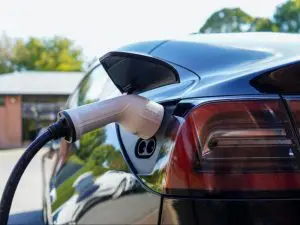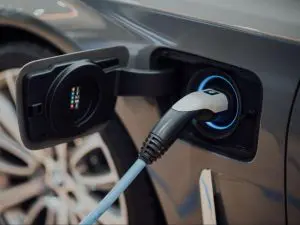As cities around the world grapple with environmental challenges, many are prioritizing sustainable urban development as a path forward. In this context, electric vehicle (EV) chargers have emerged as a crucial component. EVs not only reduce greenhouse gas emissions compared to internal combustion engine (ICE) vehicles, but the infrastructure supporting them, especially EV chargers, plays a transformative role in building environmentally friendly, resilient, and forward-thinking urban spaces. This article delves into the various ways EV chargers contribute to sustainable urban development, exploring their role in reducing emissions, fostering renewable energy integration, supporting green mobility, and enhancing the social and economic vitality of cities.
Reducing Urban Emissions and Pollution
One of the most immediate impacts of EV chargers in urban settings is the support they provide for reducing emissions and air pollution. Transportation is a significant source of urban pollution, and in cities, traditional gasoline and diesel vehicles are among the largest emitters of CO₂, nitrogen oxides (NOx), and particulate matter. EVs, powered by clean energy, offer a clear path toward reducing these pollutants.
However, EVs can only be effective if supported by a robust network of accessible charging stations. By making EV chargers more widely available, cities encourage the adoption of electric vehicles, which in turn leads to a reduction in harmful emissions. This has a direct impact on air quality, which improves public health and reduces urban heat through lower exhaust emissions. As cities embrace sustainable urban development, integrating EV chargers in strategic locations, such as near commercial centers, residential buildings, and public transit stations, becomes a key strategy in reducing the transportation sector’s carbon footprint.
Supporting Renewable Energy Integration
The synergy between EV chargers and renewable energy sources, such as solar and wind, is another critical aspect of sustainable urban development. EV chargers can be strategically paired with renewable energy sources to create a cleaner, decentralized energy grid. This approach, often referred to as Vehicle-to-Grid (V2G) technology, allows EVs to act as mobile energy storage units, storing excess renewable energy and feeding it back to the grid during periods of high demand.
This integration supports grid stability, reduces reliance on non-renewable energy sources, and encourages further investment in renewable energy infrastructure. Solar-powered EV chargers, for instance, allow cities to directly tap into clean energy while charging vehicles, minimizing grid dependency and creating a cleaner, more sustainable energy loop. As cities around the world work toward ambitious climate goals, this pairing of EV chargers with renewables exemplifies how sustainable urban development can simultaneously promote green mobility and renewable energy.
Promoting Green Mobility and Reducing Traffic Congestion
One of the significant advantages of EV chargers is their role in promoting green mobility, a core aspect of sustainable urban development. Green mobility refers to the adoption of eco-friendly, efficient modes of transportation, and EVs are central to this concept. Accessible EV charging infrastructure encourages individuals to choose electric vehicles over conventional cars, which aligns with the broader objective of green mobility.
Furthermore, strategically placed EV chargers can complement other green mobility initiatives, such as public transit, bike-sharing, and pedestrian-friendly zones. By positioning chargers near public transit hubs, cities can encourage commuters to use a combination of EVs and public transit, effectively reducing traffic congestion and alleviating the need for extensive parking infrastructure. This integration supports a holistic green mobility ecosystem, where different forms of sustainable transportation options work together to reduce overall emissions and make cities more livable.
Enhancing Economic Development and Job Creation
The installation and maintenance of EV charging infrastructure create a range of economic opportunities that align with sustainable urban development goals. As cities expand their EV charger networks, they require a workforce for installation, maintenance, and management, contributing to job creation. Additionally, the EV industry is rapidly growing, and cities that invest in EV chargers position themselves as leaders in clean technology, attracting businesses and manufacturers in the EV and clean energy sectors.
This economic impact extends to local businesses as well. According to our pals at Cyber Switching, EV chargers installed at commercial locations, such as shopping centers, restaurants, and entertainment venues, can attract EV drivers, who often spend time and money at nearby businesses while waiting for their vehicles to charge. The presence of EV chargers can be a selling point for businesses looking to attract eco-conscious consumers, adding a competitive edge and promoting sustainable consumer behavior. For cities, this economic vitality translates into a sustainable, resilient economy that supports both local businesses and clean technology.
Supporting Equity and Accessibility in Sustainable Development
Equity and accessibility are critical pillars of sustainable urban development, and the deployment of EV chargers can play a significant role in supporting these values. However, if EV chargers are disproportionately concentrated in wealthier neighborhoods or areas with greater economic resources, underserved communities may miss out on the benefits of clean transportation options. Ensuring a fair distribution of EV chargers can help address these disparities by providing all residents access to clean, affordable mobility options.
In some cities, government incentives or public-private partnerships are used to expand EV charger networks in lower-income neighborhoods and public housing developments. This provides access to EV chargers for a broader range of people and helps lower barriers to EV adoption among populations that might otherwise lack access to charging infrastructure. Through equitable distribution, cities can create a more inclusive approach to sustainable urban development, where all share the benefits of green infrastructure.
Building Resilient Infrastructure for Future Urban Needs
As urban areas expand and face new challenges, the demand for resilient infrastructure capable of withstanding environmental and economic pressures has grown. EV chargers contribute to this resilience by providing flexibility to the power grid, fostering energy independence, and reducing dependency on fossil fuels. When coupled with V2G technology, EV chargers allow cities to store excess energy that can be used during power shortages or emergencies, ensuring a more stable and resilient grid.
Moreover, EV chargers can be integrated into smart city infrastructure, where data from charging stations is used to monitor energy usage, predict demand patterns, and identify optimal locations for new chargers. This data-driven approach allows cities to anticipate future demands, adapt to new technological advancements, and optimize energy use, making urban infrastructure more adaptive to change and future-proof.
Shaping Urban Design and Public Space
Finally, EV chargers can play a role in reshaping urban design, especially as cities embrace pedestrian-friendly spaces, green zones, and mixed-use developments. The integration of EV chargers encourages a reimagining of public space, where traditional parking lots evolve into multi-functional hubs with EV charging, green spaces, and community gathering areas. The strategic placement of EV chargers in accessible and aesthetically pleasing public spaces helps normalize sustainable transportation and signals the city’s commitment to a greener, more inclusive future.
Conclusion
In summary, EV chargers are essential in driving sustainable urban development, offering environmental, economic, and social benefits. From reducing emissions and supporting green mobility to fostering economic growth and equitable access, EV chargers serve as a cornerstone for cities aiming to build sustainable futures. By investing in EV infrastructure, cities can not only meet their immediate climate goals but also create adaptable, resilient urban environments equipped to thrive amid future challenges. Sustainable development, therefore, is no longer limited to isolated green projects but is embodied in interconnected urban systems, with EV chargers as key enablers of cleaner, greener, and more livable cities.



